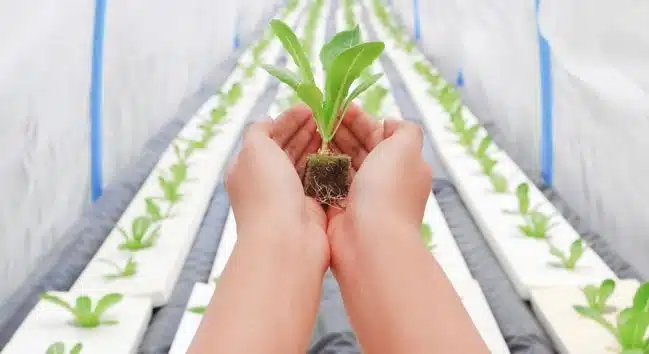In a world where sustainability, space-saving, and efficiency are more important than ever, hydroponic systems are transforming how we grow our food. But what exactly are they, and how do they work?
If you’ve ever wondered how plants can thrive without soil, you’re in the right place. Let’s break down what hydroponics is, how it works, and why more people are turning to this modern method of gardening.
What Is a Hydroponic System?
A hydroponic system is a method of growing plants without soil. Instead, it delivers water, oxygen, and essential nutrients directly to plant roots using a nutrient-rich solution. This allows for faster growth, higher yields, and more control over the growing environment.
Hydroponics can be used indoors or outdoors and is ideal for growing vegetables, herbs, and even fruit in spaces where traditional gardening isn’t practical.
How Does It Work?
Hydroponic systems vary in design, but the core principles are the same. Here’s how it works step-by-step:
1. Nutrient Solution
Plants need more than just water to grow – they also need nutrients like nitrogen, phosphorus, potassium, calcium, and magnesium. In hydroponics, these are dissolved into water to create a complete, balanced solution that feeds plants directly.
2. Water and Oxygen Delivery
Roots need water to absorb nutrients and oxygen to breathe. Hydroponic systems carefully balance these two elements, using different techniques to ensure roots don’t drown or dry out. Many systems use aeration or pumps to circulate oxygen-rich water around the root zone.
3. Growing Medium
Although soil isn’t used, many systems still need a supportive medium to anchor plants. Common options include:
- Rockwool
- Clay pellets (LECA)
- Perlite
- Coco coir
These materials are inert, meaning they don’t interfere with the nutrient mix or hold excessive water.
4. Controlled Environment
Because you’re not relying on outdoor conditions, hydroponic growers can control light, temperature, humidity, and pH levels. This makes it easier to optimise plant health and avoid pests or diseases often found in soil.
Types of Hydroponic Systems
There are several common types of hydroponic setups. Here are a few popular ones:
- Deep Water Culture (DWC): Plants float on a nutrient solution while their roots hang in oxygenated water.
- Nutrient Film Technique (NFT): A thin film of nutrient-rich water flows over plant roots in a channel.
- Ebb and Flow (Flood and Drain): The grow bed floods with nutrient solution, then drains back into a reservoir on a timer.
- Drip System: Nutrients are slowly dripped into the growing medium near the roots.
- Wick System: A passive system where nutrients travel from the reservoir to the roots via a wick.
- Aeroponics: Roots are suspended in air and misted with nutrient solution.
Each method has its pros and cons, depending on what you’re growing and how much time, space, and budget you have.
Why Use Hydroponics?
Hydroponic systems offer several advantages over traditional soil gardening:
- Faster growth rates
- Higher yields per square metre
- Less water use (up to 90% less than soil-based farming)
- Fewer pests and diseases
- Year-round growing indoors
- No weeding or digging
It’s a smart choice for urban gardeners, hobbyists, commercial growers, and anyone looking to grow more with less.
Final Thoughts
Hydroponics may seem high-tech, but at its core, it’s simply about giving plants exactly what they need, when they need it. Whether you’re growing herbs on a windowsill or setting up a full-scale indoor farm, understanding how hydroponic systems work is the first step to getting started.
Curious about which system is best for you? Keep an eye out for our next post – we’ll explore how to choose the right hydroponic setup for your space and goals.





